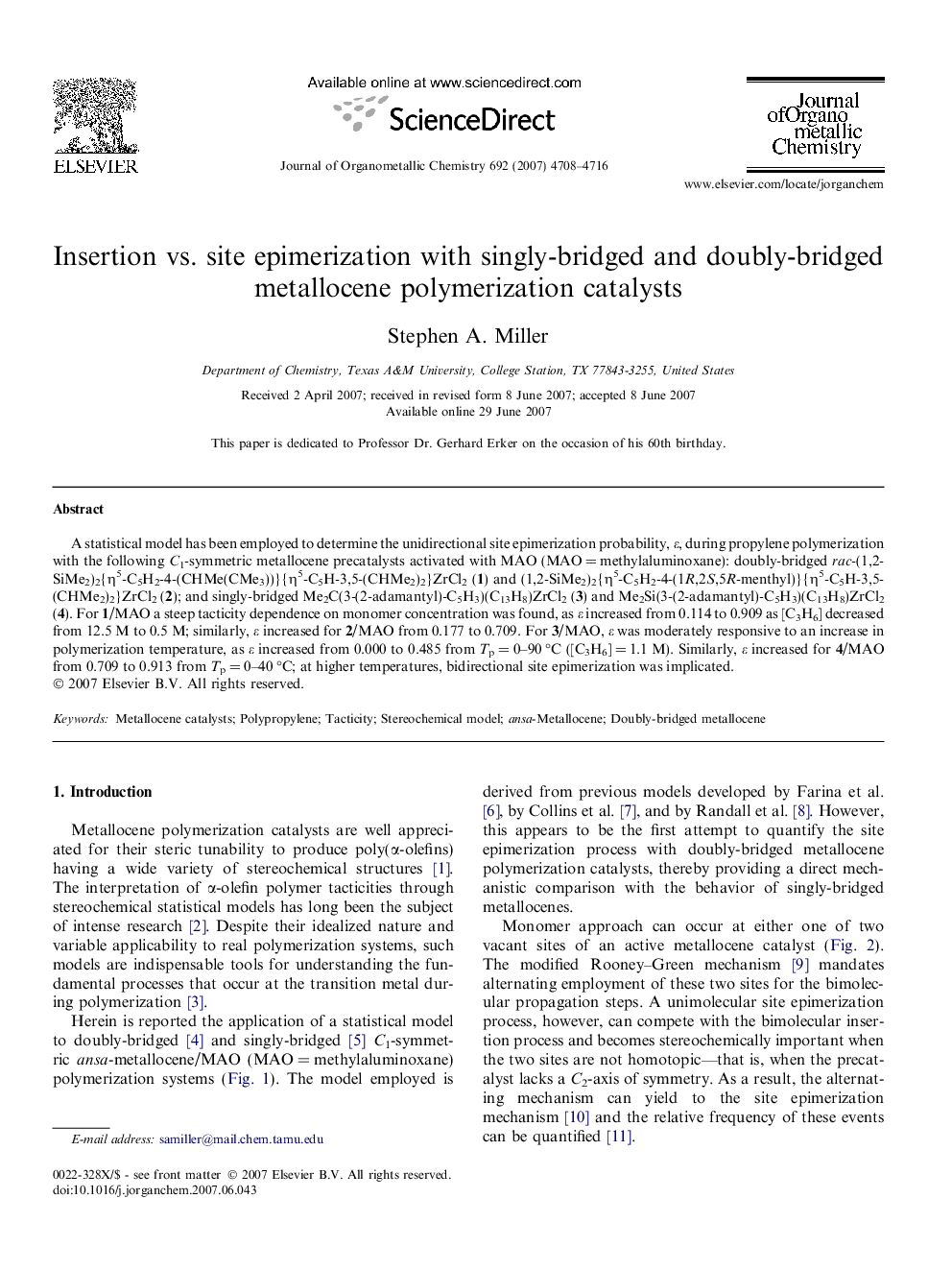| Article ID | Journal | Published Year | Pages | File Type |
|---|---|---|---|---|
| 1328227 | Journal of Organometallic Chemistry | 2007 | 9 Pages |
A statistical model has been employed to determine the unidirectional site epimerization probability, ε, during propylene polymerization with the following C1-symmetric metallocene precatalysts activated with MAO (MAO = methylaluminoxane): doubly-bridged rac-(1,2-SiMe2)2{η5-C5H2-4-(CHMe(CMe3))}{η5-C5H-3,5-(CHMe2)2}ZrCl2 (1) and (1,2-SiMe2)2{η5-C5H2-4-(1R,2S,5R-menthyl)}{η5-C5H-3,5-(CHMe2)2}ZrCl2 (2); and singly-bridged Me2C(3-(2-adamantyl)-C5H3)(C13H8)ZrCl2 (3) and Me2Si(3-(2-adamantyl)-C5H3)(C13H8)ZrCl2 (4). For 1/MAO a steep tacticity dependence on monomer concentration was found, as ε increased from 0.114 to 0.909 as [C3H6] decreased from 12.5 M to 0.5 M; similarly, ε increased for 2/MAO from 0.177 to 0.709. For 3/MAO, ε was moderately responsive to an increase in polymerization temperature, as ε increased from 0.000 to 0.485 from Tp = 0–90 °C ([C3H6] = 1.1 M). Similarly, ε increased for 4/MAO from 0.709 to 0.913 from Tp = 0–40 °C; at higher temperatures, bidirectional site epimerization was implicated.
Graphical abstractA statistical model has been employed to determine the unidirectional site epimerization probability, ε, during propylene polymerization with singly-bridged and doubly-bridged C1-symmetric metallocenes activated with methylaluminoxane. Generally, the probability of site epimerization increased as follows: carbon singly-bridged catalysts < doubly-bridged catalysts < silicon singly-bridged catalysts.Figure optionsDownload full-size imageDownload as PowerPoint slide
